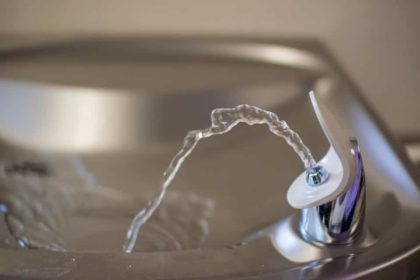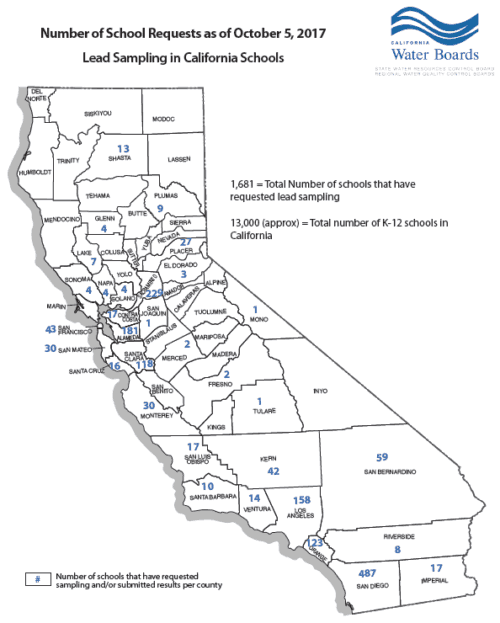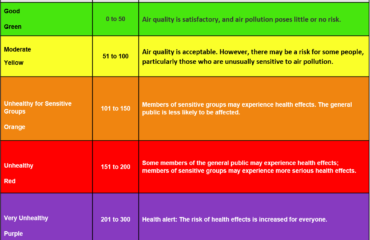Testing Lead in School Drinking Water

Recent Concerns:
Lead in School Drinking Water
Lately we’ve heard a lot about the heavy metal lead in school drinking water across California. The reason we’re hearing about these schools finding lead in their drinking water is because schools are now required to test for lead. We have known for a long time that lead poses significant health concerns, especially to children. The growing bodies of children and infants absorb more lead than the average adult and can result in irreversible damage to development.
New Legislation for School Drinking Water Standards
There are no federal regulations for requiring testing for lead in school drinking water and childcare facilities, except for those that operate their own public water system, such as a well. California has recently passed legislation to address the lack of testing occurring in our public schools, thereby identifying lead source exposure. As of October 13, 2017, legislation AB746 adds Section 116277 to the Health and Safety Code that requires the State Water Resources Board to work with educational agencies to improve the quality of drinking water in public schools serving kindergarten through 12th grade and preschools and child day care facilities located on public school property.
Read California’s bill on Lead Testing in Schools and the code here:
The California Water Resources Board lays out their plan and provides additional information here on lead in school drinking water.
The bill required schools constructed before January 1, 2010 served by community water systems, such as public utilities like EBMUD or SFPUD, to test for lead in the potable water system of the school site before January 1, 2019. Schools were to request testing of the public water system any time prior to November 1, 2019.
If testing finds lead in school drinking water that exceeds 15 parts per billion (ppb), the school or school district must notify all parents and guardians of impacted students. Additionally, a school must shut down all sources where the excess lead levels may exist. Additional testing may be required to determine if all or just some of a school’s fountains and faucets are required to be shut down.
Action Steps: Lead in School Drinking Water
School districts are taking measures to protect students when testing identifies lead above the regulatory action level of 15 ppb in school drinking water in one or more fixtures:
- Turn off water source to fixture
- Notify school community
- Provide bottled drinking water as necessary or requested
- Repairing, updating or removing fixtures
- Guidance on how to flush the faucet(s)
- Written instructions and resources
Test results for lead in school drinking water are in now and individual school districts have published results of testing on their websites.
San Francisco Unified School District (SFUSD) has found lead in drinking water at numerous schools and publishes the results and the action plan for those sites here.
Oakland Unified School District (OUSD) publishes their results here.
As alarming and concerning it has been to learn of all of these sources of lead exposure in our schools, once the sources are found, replacing the offending fixtures and plumbing solves the problem.
If you are concerned about exposure in your home or workplace, some utilities and public health departments offer voucher programs to test your water for lead for free or reduced prices.
San Francisco Department of Public Health offers inexpensive or FREE testing to residents.
East Bay Municipal Water District EBMUD offers free vouchers to customers to test for lead.
If you are concerned about your lead exposure testing is the first step to solving the problem.
By Laurel Cain, Healthy Building Science Environmental Inspector
To learn more about the HBS position on Water filtration visit our position statements.
If you want to test your home, office or school for heavy metals including lead contact HBS.




